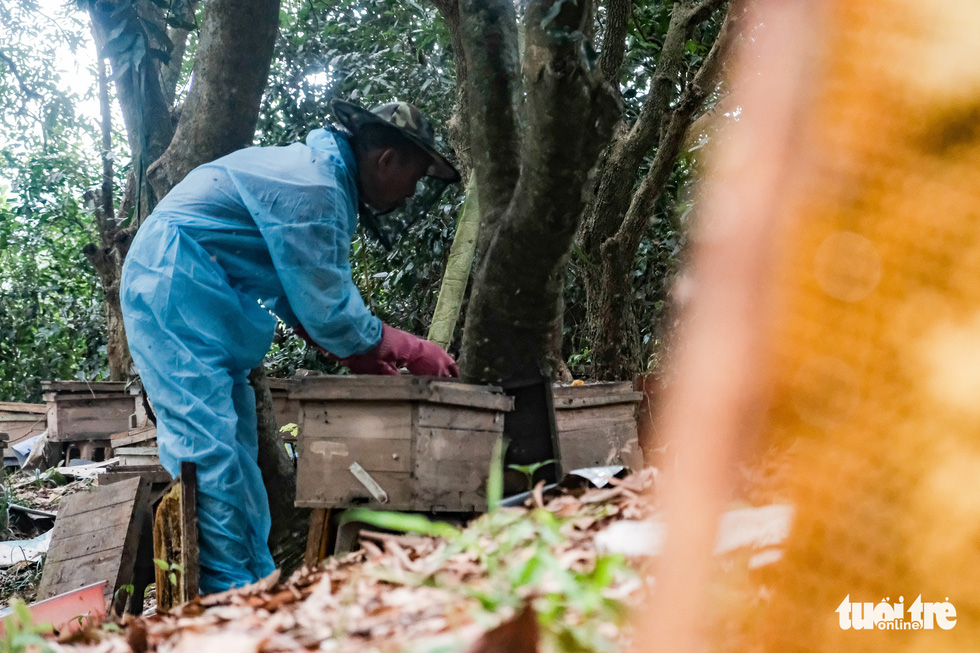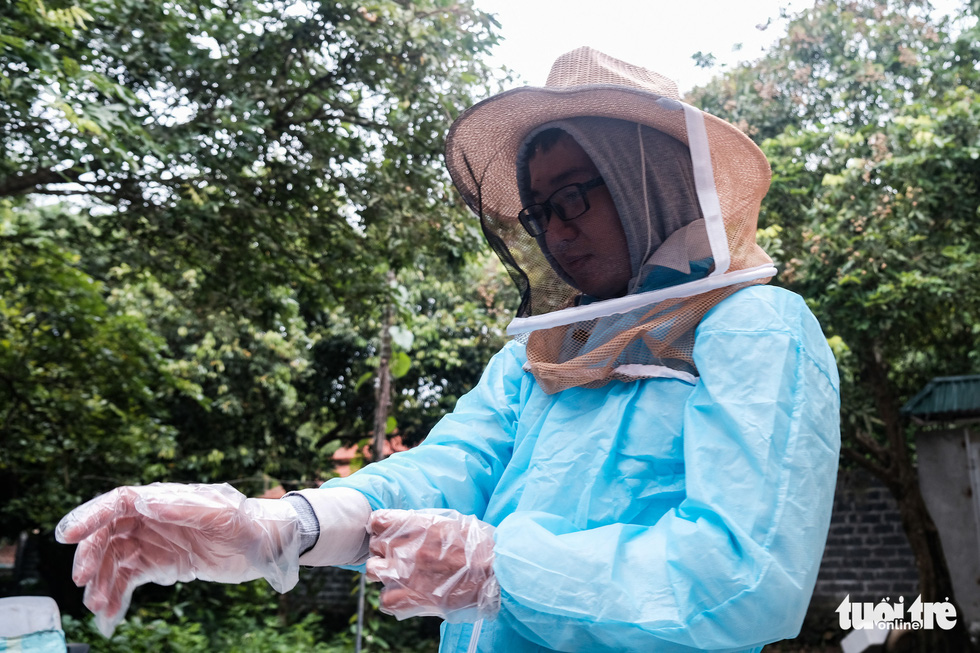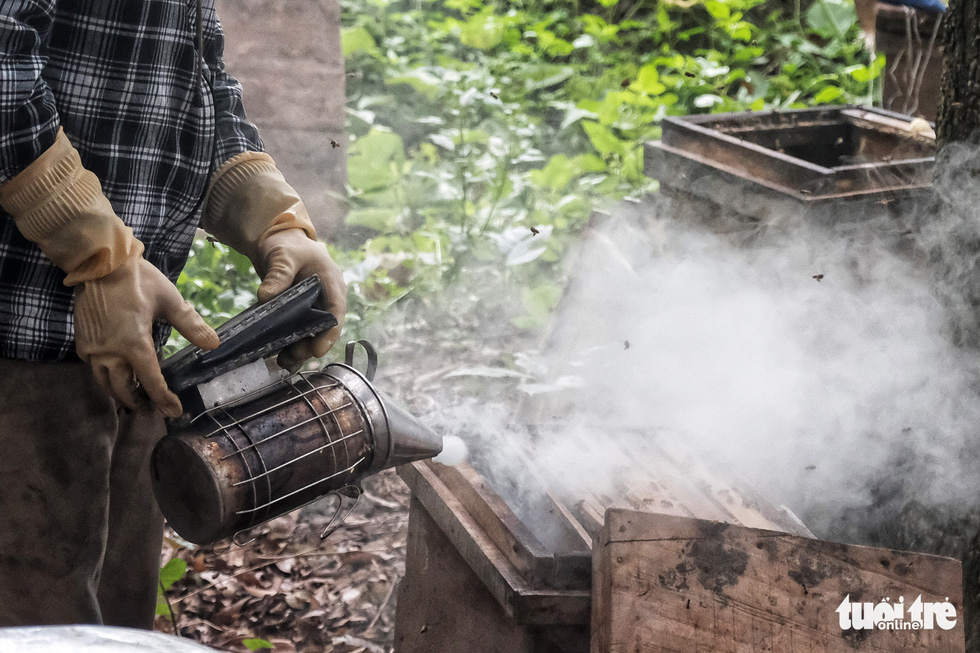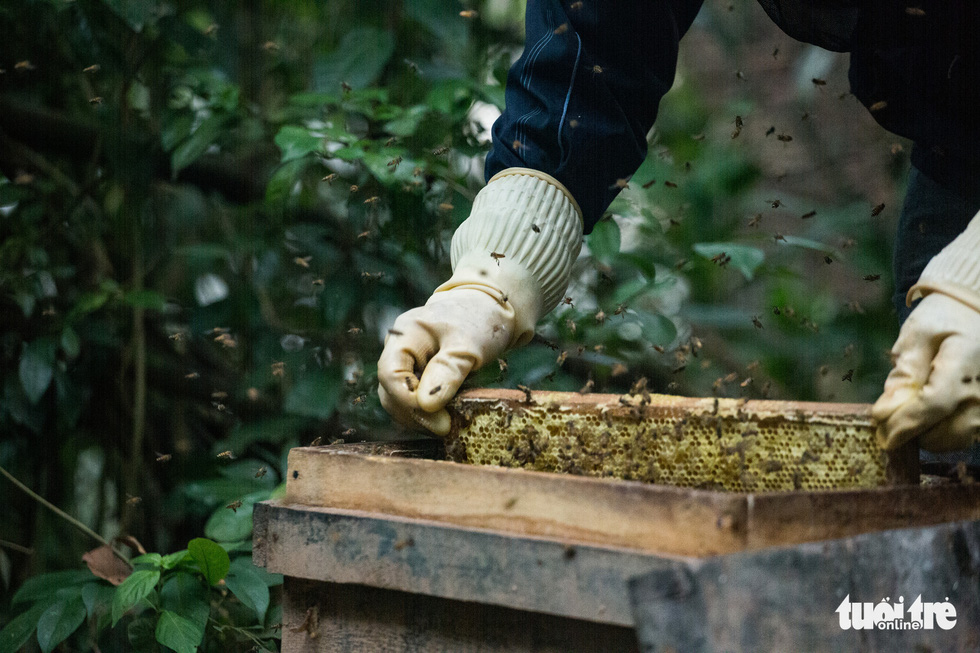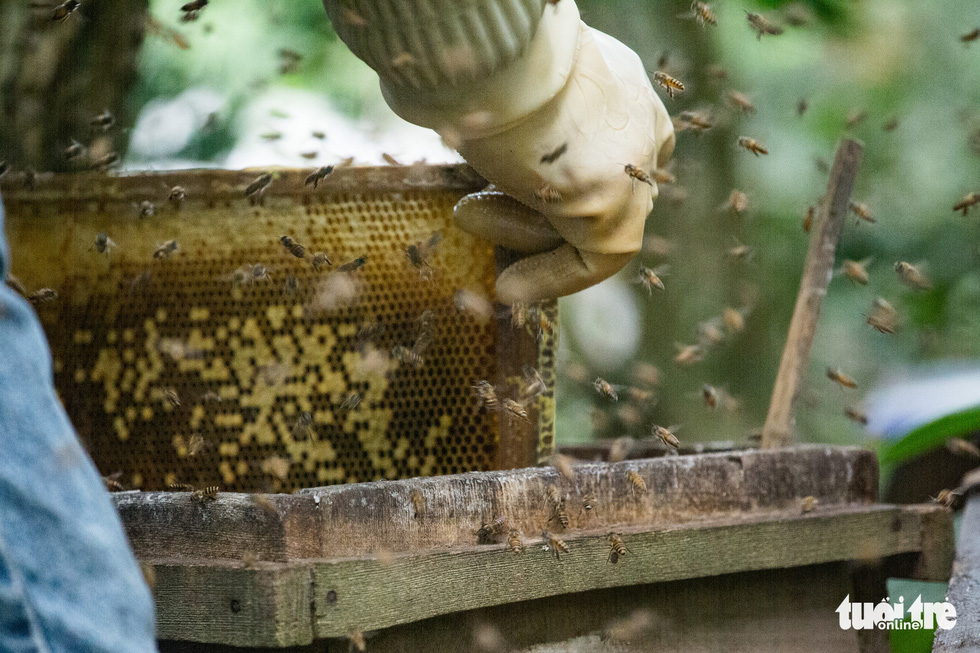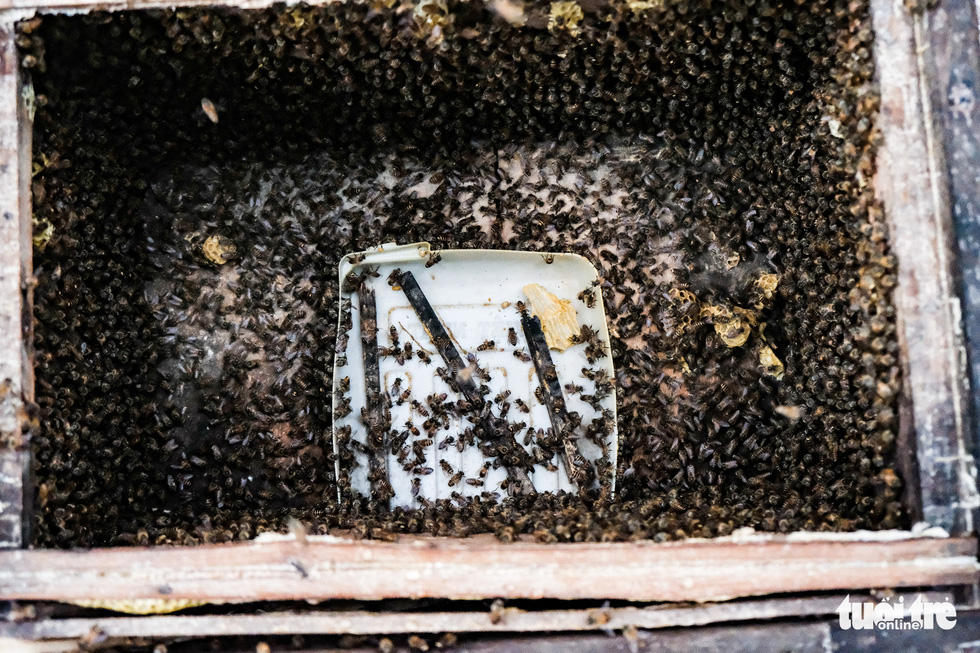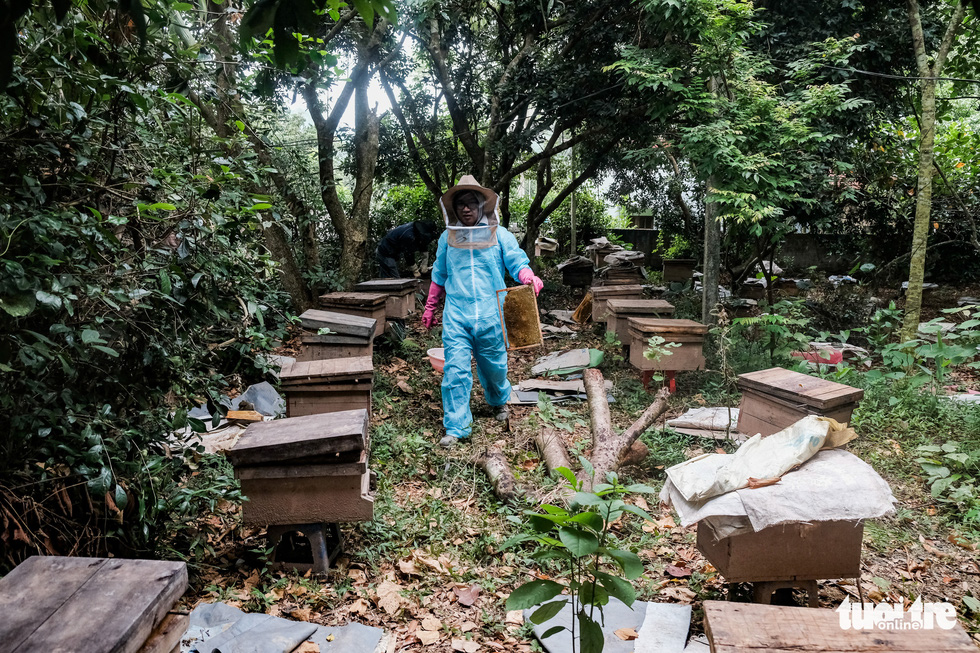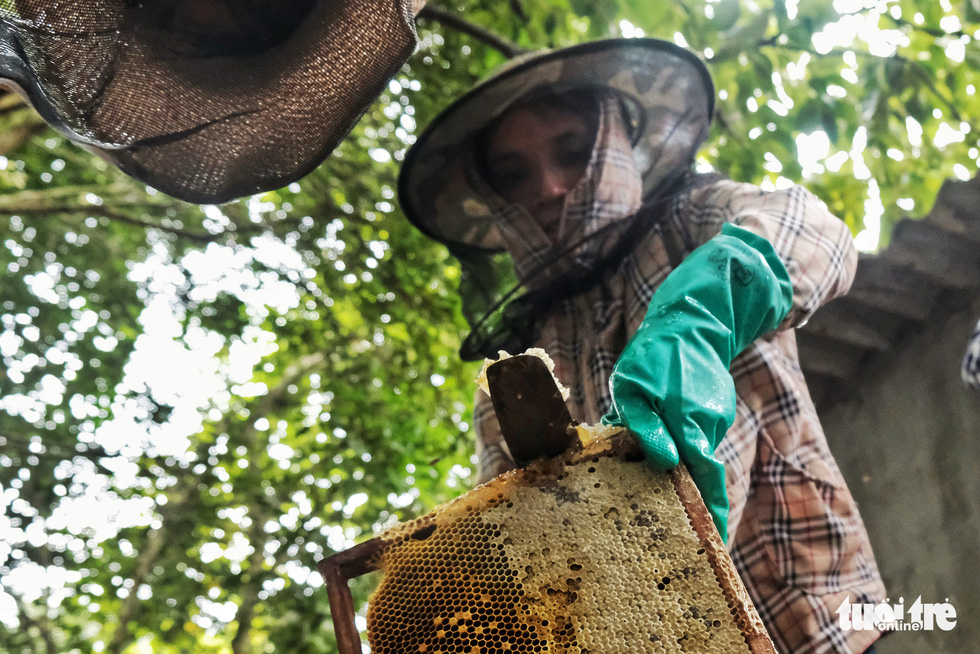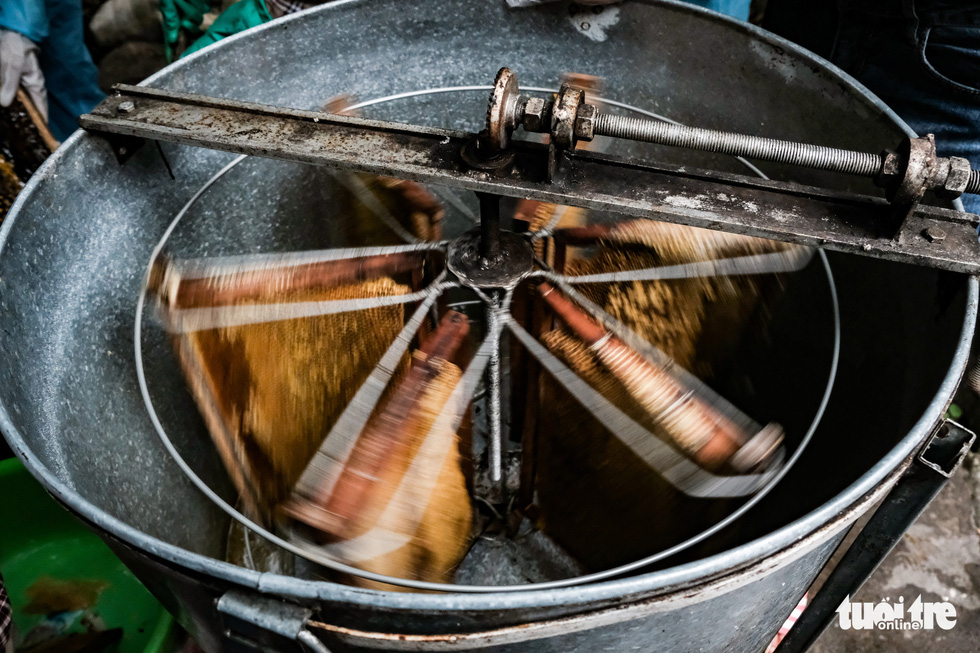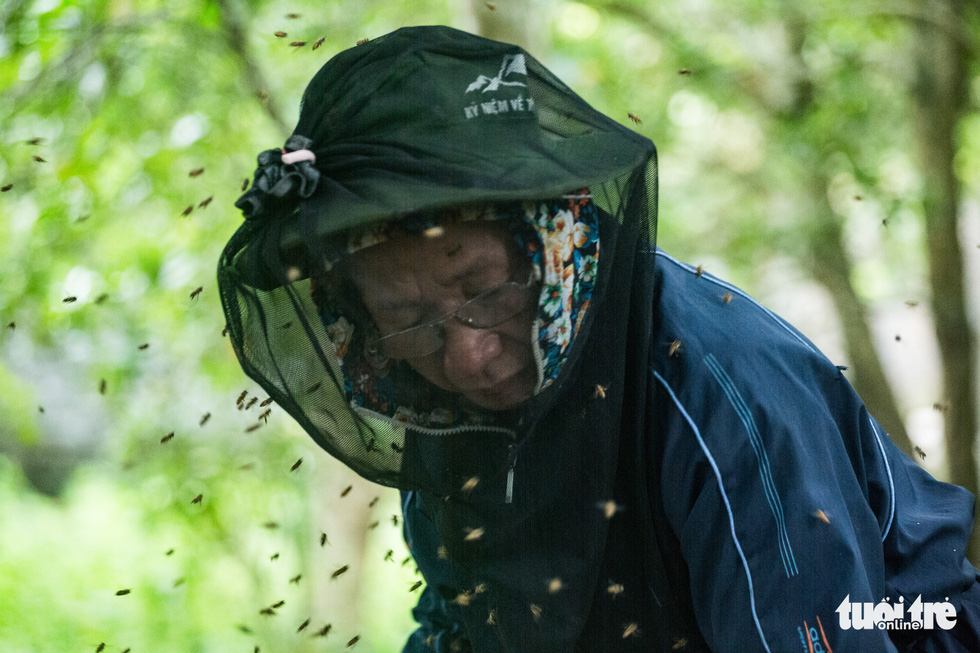It was just another day as Vu Van Thai and his family members traveled to Hoa Binh Province, approximately 75 kilometers from Hanoi, to harvest fine-quality honey from their bee colonies, a routine they have done over the past three decades.
Around five that morning, Thai, a beekeeper for nearly 30 years, and his family members left their home in Ha Dong District, Hanoi, ready for a day’s harvest at their bee farm in Hoa Binh.
This is the year’s third and also last honey harvest, which typically starts in early July, three weeks after the second.
Thai said they are by and large on the move between the two localities when flowers bloom.
According to the veteran beekeeper, he and his family have their plates full with three harvest seasons, namely longan, apple and forest honey, during the year.
“As it is the forest honey season now, we’re transporting our swarms to forest edges where bees can suck irresistibly tempting nectar from the blossoms,” Thai said, adding the insects are moved back to Hanoi during the longan and apple seasons so that he can better tend to them.
“We collect about 300 liters of pure honey on average during each apple and forest honey season. The longan honey harvest, however, gives the lowest yields but the honey is the most sought-after variety,” Thai revealed.
As bees fail to pick up nectar in winter, they feed on an amount of honey they have produced during the year, he added.
Thai’s farm boasts more than 100 boxes of bees, with most of the insects coming from the wild and the rest bought from other keepers.
Thai said the job has brought great economic efficiency with handsome profits and low investment and overheads, with his family raking in more than VND100 million (US$4,291) in profits each year.
|
|
| To avoid stings during harvest time, keepers in Vietnam need to put on hats with veils, overall protective clothing, and gloves. Photo: Mai Thuong / Tuoi Tre |
|
|
| First, keepers spray fumes so that the swarms turn less aggressive and leave their hives, which makes it easier to collect honey from trays of honeycomb. Photo: Mai Thuong / Tuoi Tre |
|
|
| After spraying fumes, keepers remove trays of honeycomb from beehive boxes. Photo: Mai Thuong / Tuoi Tre |
|
|
| Trays are where bees build hives and produce honey. Each box can hold four or five trays which are laden with wax and fragrant, glossy honey. Photo: Mai Thuong / Tuoi Tre |
|
|
| Bee swarms are thrown into ‘panic’ as the trays containing their hard-earned fruits are removed from the boxes. Photo: Mai Thuong / Tuoi Tre |
|
|
| Vu Van Thai’s farm, snuggled in Ha Dong District, Hanoi, Vietnam, home to more than 100 boxes of beehives, needs five to seven people to collect honey during harvest time. Photo: Mai Thuong / Tuoi Tre |
|
|
| After being removed from behive boxes, trays of honeycomb are trimmed off outside layers of wax before being put into honey extractors. Photo: Mai Thuong / Tuoi Tre |
|
|
| Trays are then arranged into a honey extractor, which is a centrifugal spinning machine making honey spurt out. Photo: Mai Thuong / Tuoi Tre |
|
|
| According to Vu Van Thai, owner of a bee farm nestled in Ha Dong District, Hanoi, Vietnam, the greatest challenge is the harvest, during which collectors without proper protection are highly prone to stings. Weather conditions may also take a toll on the quality and quantity of honey. Rainy weather means diluted honey, which cannot be harvested, while sunny weather leaves honey condensed, which also causes difficulties to collectors. Photo: Mai Thuong / Tuoi Tre |
|
|
| After honey is collected, empty trays are put back into beehive boxes. The job ends when the swarms settle back into their hives. Photo: Mai Thuong / Tuoi Tre |
Like us on Facebook or follow us on Twitter to get the latest news about Vietnam!



